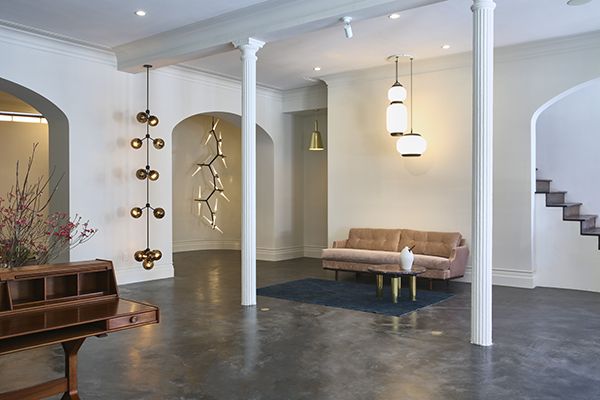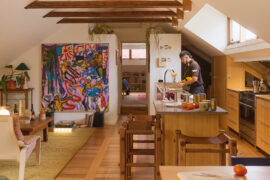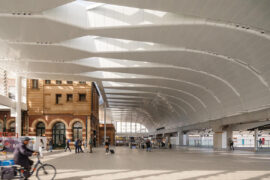Lighting company Roll & Hill have launched their first official showroom in the heart of Soho, New York City’s design mecca. Elana Castle reports.

June 3rd, 2016
In a retail climate defined by a rapid growth in e-commerce and an equally rapid decline in the presence of brick and mortar establishments, it’s always surprising when a relatively young design brand announces a leap into the physical sphere.
Roll & Hill, a lighting company, collaborates with a range of design superstars (including the likes of Lindsey Adelman, Philippe Malouin, and Formafantasma), to produce their own line of lighting fixtures and accessories. Despite operating since 2010 from their headquarters in Brooklyn, the company lacked a dedicated showroom space. However, buoyed by their significant growth in the six years since inception, founder and creative director Jason Miller felt that the time was ripe to solidify the company’s success with a space that could house Roll and Hill’s entire collection in one place, for the first time.
“I wanted to create a place for architects, designers and design lovers to visit, explore and hopefully find a few surprises along the way,” explains Miller. The design of the The 4,000 sf, 3-story showroom underscores the company’s approach to design and fabrication, where attention to detail, a commitment to using the finest materials and a love of the bespoke, are paramount.
The design of the space was conceived by Miller in collaboration with architecture firm Husband Wife. Whilst the first floor resembles the interior of a traditional gallery (an open floor plan bound by white walls and illuminated with natural light), the second and third floor spaces feel both original and otherworldly, mirroring the design approach often evident in the Roll & Hill collection, where historical elements are fused with contemporary forms to create lights that are both familiar, yet totally new.
A palette of rich and refined details materials like wood paneling, plush carpeting and lacquered walls and finishes also reference Roll & Hill’s lighting repertoire which includes intricate pieces made from brass, bronze, leather, wood, hand-knotted rope and mouth-blown glass.
The space gives great flexibility to the placement of the lights, some of which are suspended from the ceiling, located in curved wall recesses or placed on burled platforms, all within the context of a limited selection of furniture designed by Miller himself, Philippe Malouin and Finn Juhl, with more to follow.
Roll & Hill
rollandhill.com
INDESIGN is on instagram
Follow @indesignlive
A searchable and comprehensive guide for specifying leading products and their suppliers
Keep up to date with the latest and greatest from our industry BFF's!

Gaggenau’s understated appliance fuses a carefully calibrated aesthetic of deliberate subtraction with an intuitive dynamism of culinary fluidity, unveiling a delightfully unrestricted spectrum of high-performing creativity.

For Aidan Mawhinney, the secret ingredient to Living Edge’s success “comes down to people, product and place.” As the brand celebrates a significant 25-year milestone, it’s that commitment to authentic, sustainable design – and the people behind it all – that continues to anchor its legacy.

In Tasmania, Stuart Williams crafts his work with care and creates objects of desire with sustainability at their heart.

Christopher Boots marries traditional and cutting-edge materials and techniques to create beautiful objects.
The internet never sleeps! Here's the stuff you might have missed

Adelaide will debut its first city-wide design festival – every*where: Adelaide Design Week – from 20th to 24th August 2025.

Now in their 19th year, the Architecture & Design Sustainability Awards are Australia’s leading program dedicated to recognising innovation and excellence in sustainable architecture and design.